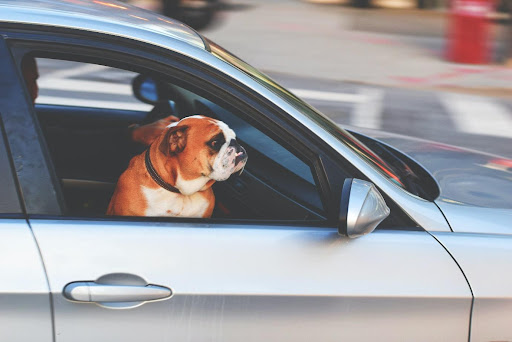The allure of a new job opportunity, a desire for a change in lifestyle, or a quest for more affordable living are just a few factors influencing people’s decisions to pack up and leave behind the Rocky Mountain state. The competitive job market, rising living costs, and even climate considerations all play roles in shaping the patterns of migration. By understanding these factors, we can better appreciate the currents of change sweeping through Colorado Springs. Besides, your long-distance may become more challenging if you need to make a move with pets.
As a pet owner, you know that pets are most comfortable in their routines and familiar environment. The process of packing and transitioning can undoubtedly unsettle their sense of security, and you may notice their behavior changing, showing signs of restlessness, anger, and frustration. The transition can become a lot more challenging if your pets enjoy the freezing winters and pleasant summers of Colorado Springs but now moving to a warmer city or state.
However, with careful planning and proactive measures, you can keep your pets comfortable during the transition and turn this seemingly challenging relocation into an exciting journey for your fur babies. Continue reading to explore seven tips for a seamless, hassle-free, long-distance move with your fur babies.
-
Hire an Experienced Long-Distance Mover
Irrespective of the reason behind your move, make sure you hire a Colorado Springs long distance moving company who can facilitate long-distance move with pets. Do your research, and discuss the cost, carriers they will use, paperwork, and other important details before hiring them.
-
Spend Quality Time with Pets during Packing
Instead of spending time packing your belongings and coordinating the moving process, you must delegate as many tasks as possible to a credible long-distance company. This way, you can spare plenty of time for your furry friends and devote these precious moments to comfort and prepare them for the long move ahead. A little extra time each day to spend moments of pure love, attention, and bonding will help your pets cope with the entire moving process.
-
Create a Safe Space for Your Pets
Pets just can’t help but roam around in the house frantically all day. However, when the packing starts, the once-familiar space transforms into a chaotic arrangement of items strewn about, which puts your beloved pets in danger of getting hurt. Moreover, packing items like bubble wraps, boxes, tapes, plastic bags, paper cutters, scissors, and packing peanuts are potentially hazardous items that could jeopardize your pets’ safety. These innocuous-looking objects hold the potential to entangle, suffocate, or choke our furry friends. Pets may also step their feet on sharp objects and hurt themselves badly.
Before you start packing your items, it’s important to create a safe place for your pets, away from the perils of the packing frenzy. Ensure that this separate area is safe from hazardous packing items, sharp objects, fragile pieces, or plastic wraps. Place their favorite bed and ample food to make them feel comfortable. If feasible, make this space soundproof so they don’t feel distressed by the loud sounds.
-
Stick to Their Daily Routines
Pets feel most comfortable in their daily routines. However, neglecting their routine can trigger a surge in their anxiety levels. For example, if you don’t take your dog for a walk every day, the lack of regular exercise can lead to restlessness, pent-up energy, and even behavioral issues. Similarly, altering your cat’s feeding times or play sessions may leave them disoriented and stressed, as they rely on these predictable moments to find comfort in their environment.
Maintaining the daily routines your pets are most familiar with during the packing process is essential to ensuring their overall well-being. Although it’s natural to get caught up in packing heaps of clothes or boxes of kitchen items, remember that your pets’ sense of security and stability hinges on their set routines and consistent interactions. For this purpose, try to maintain their regular feeding times and keep their schedules unchanged. Take them for a walk regularly, and don’t skimp on their play sessions. Above all, give them extra affection and reassurance that they’re cherished and secure.
-
Prepare Your Pet for the Move
Before you bid farewell to Colorado Springs and set off to your new destination, you must ensure your pet is all prepared for the long-distance move. First, pets have a very delicate gut, and they may feel sick if you experiment with different diets during the transit. So, keep your pet on their previous diet before, during, and even after your move. Try not to make sudden diet changes that may adversely affect their overall health.
Subsequently, schedule an appointment with your vet a few weeks before your move and get a comprehensive health assessment. Ensure your pet is up-to-date with their vaccinations and all the required vaccinations for the new location have been administered. Request copies of your pet’s medical record for easy transfer to the latest veterinary practice. Additionally, ensure you have an adequate supply of regular medications for the entire move and the following weeks. Keep their supplements and any prescriptions to mitigate their anxiety during traveling. Your vet may also prescribe tranquilizers to keep your pets calm during the journey, especially if you’re planning a long road trip.
-
Prepare a Moving Kit for Your Pets
Once the moving day arrives, prepare a moving kit for your pets, including all the essential items they’ll need during the transit and temporary stay. These items include:
- Pet carrier
- Bedding
- Favorite toys
- Extra bags or tins of their favorite food
- Treats
- Poop bags
- Water bowl
- Ample amount of prescribed medicines, supplements, and first-aid kit items for pets
- Copies of health/vet records
- Extra collars and leashes
- Cleaning supplies
-
Familiarize Your Pet with Their Carrier or Bed
Whether you’re planning for a long road trip or moving overseas, your pet will spend a lot of time traveling away from home. To maximize their comfort and prevent mishaps, you must keep them in pet carriers. If your pet is unaccustomed to a carrier, then your pet may feel uneasy and downhearted and refuse to enter the carrier.
To make this process somewhat easier, it’s always best to introduce the carrier to the pet well ahead of your scheduled moving day so your pet has ample time to familiarize themselves with it. Start by placing the carrier in their favorite area where they mostly play. Put their beloved blanket or bed in the carrier and serve food inside it. Also, consider placing their favorite toy or treat within the carrier and give them the freedom to investigate and sniff at their own pace. Once your pet has familiarized themselves with their carrier, try to gradually increase their time in it so they can feel at ease sitting inside it for long hours during transit.
Wrapping Up
Unlike humans, pets aren’t prepared for long-distance moves ahead of time. As you set off on your long-distance move with your furry friends, you must ensure that this challenging transition remains a comfortable and harmonious experience for your pets. We sincerely hope that the above tips and suggestions will help you plan your long-distance move with your pets and make your entire moving process a breeze.





